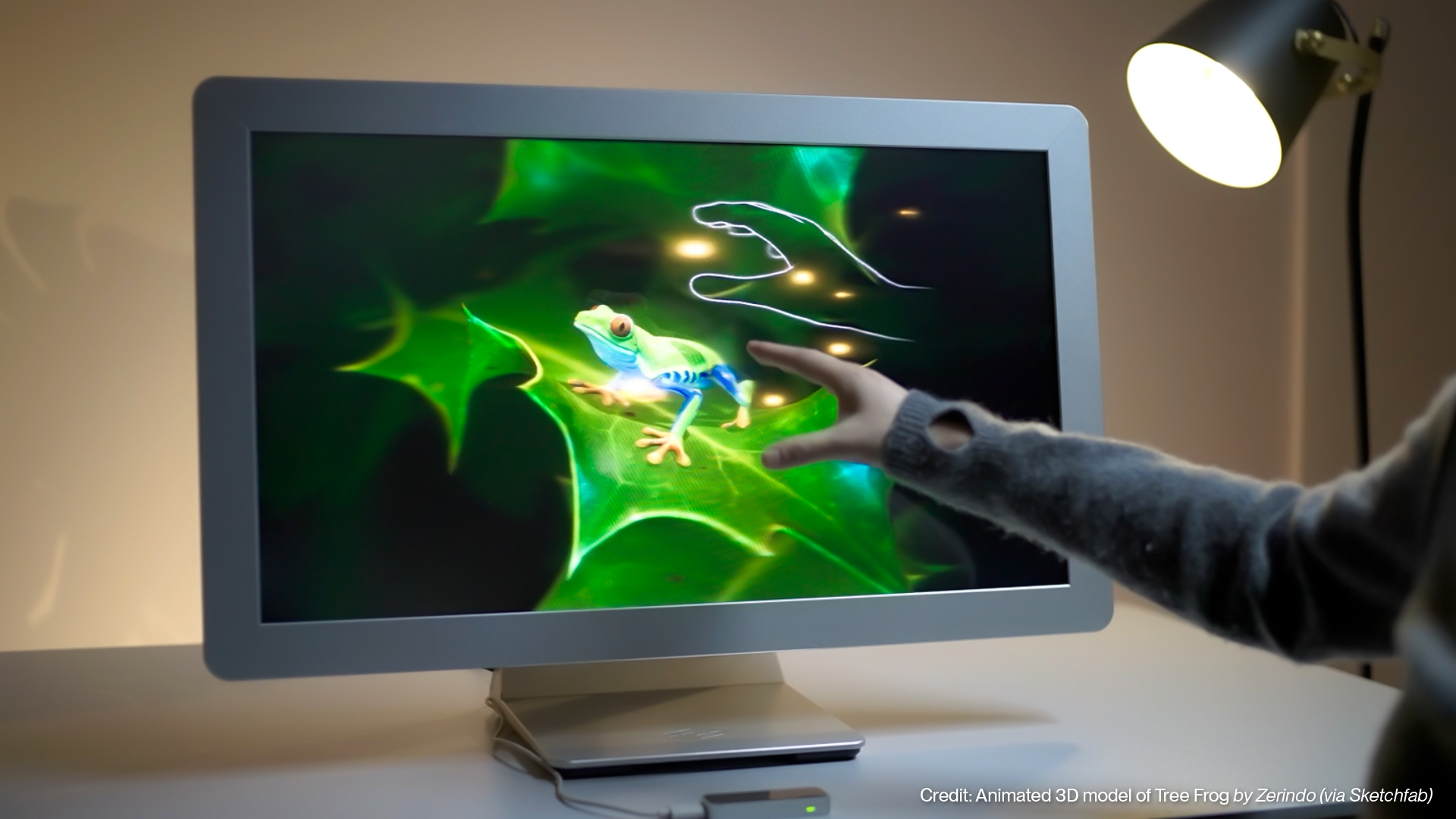Looking Glass, provider of light field display technology, unveiled the Looking Glass 27 inch, its most powerful three-dimensional display to date. The 27-inch display brings more advanced graphics, a smaller footprint, and a lower cost of operation to businesses seeking to entertain audiences or communicate ideas and concepts.
When it comes to 3D holographic displays, Looking Glass has a display size that is just right for nearly every user. For those wanting a small footprint, there is the 6-inch Looking Glass Go and the 16-inch Looking Glass light field display. On the larger side, the company offers a 32-inch and 65-inch, the latter billed as the world’s largest light field display. Now, Looking Glass is offering a model that fits in-between those offerings, with a screen size of 27 inches.

Looking Glass describes the new display as its most powerful 3D display to date. As with all its holographic displays, Looking Glass’ 27-inch display is optimized for delivering immersive 3D experiences to groups, all without the need for headsets, glasses, or special gear. With 5K visual fidelity, the device enables users to replicate depth, material characteristics, translucency, and lighting effects as they appear in the real world.
The display can be powered directly from an iPad, thanks to recent software breakthroughs, providing a smaller footprint and a lower cost of operation—delivering a roughly 35% system-level cost reduction over its predecessor, the company says.

The Looking Glass 27-inch projects 45 to 100 perspectives, simultaneously creating seamless 3D within a 53-degree view cone, so groups can experience 3D together. It offers 5K visual fidelity and 16 inches of virtual depth, all in a thin format (1 inch thick).
Users can develop their content for use with the display in Unity on a PC and deploy it on an iPad. Meanwhile, the content can be shown in portrait or landscape mode.
Users can develop their content for use with the display in Unity on a PC and deploy it on an iPad. Meanwhile, the content can be shown in portrait or landscape mode.
LIKE WHAT YOU’RE READING? INTRODUCE US TO YOUR FRIENDS AND COLLEAGUES.